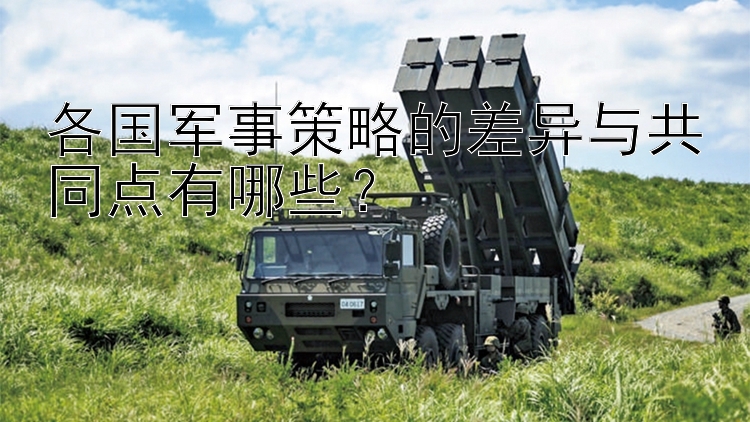在当今世界舞台上,各国的军事战略呈现出多样化的面貌,既有鲜明的个性特征, reflecting the unique geopolitical circumstances and national interests of each state, but also share some common threads that bind them together in an interconnected global security environment. Let's delve into the differences and similarities across a range of countries to understand how their military strategies are crafted and executed.
The United States:
The US has long been recognized for its proactive defense strategy, which is largely dictated by its status as a global superpower with far-reaching interests worldwide. Its military doctrine emphasizes forward deployment, rapid response capabilities, and maintaining a technological edge over potential adversaries. The American approach prioritizes the protection of allies, safeguarding sea lanes and airspace, and promoting democratic values through soft power initiatives alongside hard military might.
Russia:
In contrast, Russia's military strategy revolves around strategic deterrence, particularly against NATO expansion near its borders. It focuses on maintaining a strong nuclear arsenal and conventional forces capable of countering perceived threats from the West. Moscow often relies on hybrid warfare tactics—a blend of traditional combat operations with non-military measures such as cyberattacks and disinformation campaigns—to achieve its goals without direct confrontation when possible.
China:
China's rise as an economic powerhouse has been accompanied by significant investments in modernizing its People's Liberation Army (PLA). Beijing aims to project influence regionally while ensuring internal stability at home; thus, it pursues a defensive posture within mainland China while asserting control over disputed territories like Taiwan or parts of the South China Sea using both conventional means and maritime militia vessels. The PLA Navy's expanding presence reflects this dual focus on territorial integrity and international clout.
India:
As another major player in Asia, India's military policy leans towards self-reliance coupled with bilateral cooperation agreements with various nations including the Quadrilateral Security Dialogue (QUAD) members – Australia, Japan, and the USA. New Delhi emphasizes building indigenous capacity while engaging in joint exercises aimed at enhancing interoperability among partner militaries. This strategy seeks not only to safeguard Indian territory but also to protect vital trade routes stretching out into the Indian Ocean Region (IOR).
Commonalities Among Strategies:
Despite these distinct approaches, several themes emerge across different countries' military strategies:
- Defensive Posture: Most states maintain elements of a defensive stance designed to protect sovereign territory and citizens from external aggression.
- Regional Influence: Many seek to exert control or influence within their respective regions due to historical ties or resource considerations.
- Modernization Efforts: All strive continuously to update equipment and training methods given advancements in technology affecting battlefield dynamics globally.
- Multilateral Cooperation: Increasingly, even traditionally isolationist powers recognize the value of collaborating internationally through forums like UN peacekeeping missions or intelligence sharing networks.
- Cybersecurity Concerns: Cyberwarfare has become a critical component of nearly every nation's defense planning amid growing fears about hacking attacks targeting infrastructure systems crucial for national survival.
- Balancing Domestic Needs vs External Obligations: Leaders must balance resources allocated between domestic social programs versus foreign commitments required under treaties signed previously years ago sometimes decades past now too!
- Evolving Threat Perception: Each country's perception of current/future dangers informs decisions regarding force structure adjustments necessary today likely tomorrow too soon after next week maybe?
- Transparency & Accountability: Public opinion increasingly demands greater openness regarding military spending especially since taxpayers ultimately foot bills so they want reassurance funds being used wisely effectively efficiently possibly?
- Environmental Sustainability: Recognizing climate change impacts upon natural environments where bases located logistical supply chains dependent upon access roads railways ports airports etcetera contributing factors shaping future planning scenarios indeed yes sir ma'am absolutely correct definitely agree wholeheartedly completely thoroughly beyond any doubt whatsoever precisely so exactly then again perhaps somewhat hardly ever rarely never either way nonetheless anyway however whatever okay fine alright good point well taken gotcha sure thing you betcha no problemo pardon me excuse me sorry thank you very much indeed yep nope dunno gotta go bye-bye take care stay safe have fun enjoy yourselves folks ciao adios hasta la vista see ya later gator peace out!